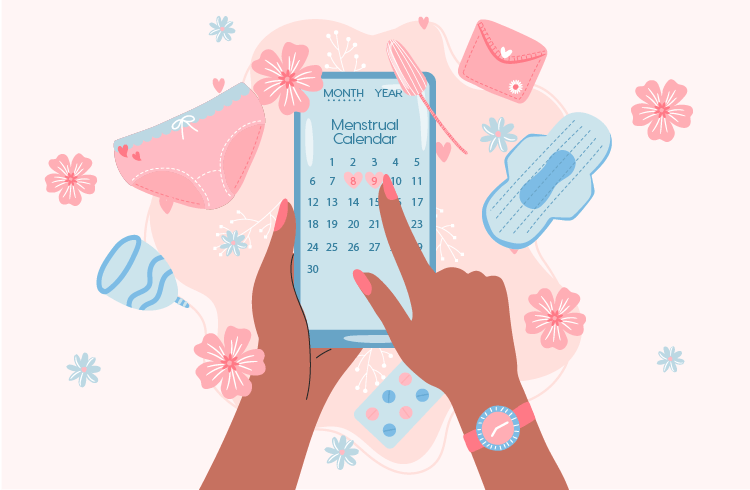Introduction
When it comes to fertility, age is a pivotal factor that often takes center stage. In this comprehensive article, we'll delve into the intricate relationship between age and fertility for both females and males. Buckle up, as we uncover the science, challenges, and choices individuals face as they navigate their unique fertility journeys.
The Biological Clock: Fertility and Aging
As we age, the intricate mechanisms of our bodies evolve, influencing our fertility in profound ways. Understanding this biological clock is essential for anyone considering family planning. It's not just a matter of numbers on a clock; it's a biological reality.
In women, aging leads to a decline in the number of ovarian follicles and a decrease in egg quality.
These changes are crucial because the ovaries house the potential for conception. Additionally, the uterus, where a fertilized egg implants and grows, may undergo changes, affecting the likelihood of successful pregnancies.
Hormones, the messengers orchestrating the intricate dance of fertility, are profoundly affected by age.
In women, the levels of hormones like estrogen and progesterone fluctuate and, as they age, these fluctuations become more pronounced. Irregularities in these hormonal levels can disrupt ovulation and menstrual cycles. For men, aging affects testosterone levels, potentially leading to decreased libido and changes in sperm production.
To truly grasp the impact of age on fertility, we must turn to statistics.
These figures reveal a compelling story. In women, the probability of conceiving naturally significantly declines after the age of 35. By the age of 40, conception becomes notably challenging, and the risk of miscarriages rises significantly. For men, while fertility decline is more gradual, advanced paternal age is associated with an increased risk of genetic mutations in offspring. The table below illustrates the statistical probabilities of achieving a natural pregnancy within a year based on different age groups. These figures represent the average chances of conception for couples engaging in regular, unprotected intercourse.
Age Group | Chances of Natural Pregnancy (%) |
| Below 25 | 90+
| 25-29 | 85
| 30-34 | 75
| 35-39 | 50
| 40-44 | 20
| 45 and above | Less than 5

Female Fertility and Age
The Female Reproductive System
The female reproductive system is an intricate network of organs and hormones, each playing a vital role in the journey towards conception. At its core are the ovaries, where eggs are stored from birth. During ovulation, a mature egg is released and travels down the fallopian tube, where it may meet sperm for fertilization. The uterus, with its thick lining, provides an ideal environment for a fertilized egg to implant and develop into a fetus. Supporting this process are hormonal changes, orchestrated by the pituitary gland and ovaries, regulating the menstrual cycle and ensuring the optimal conditions for pregnancy. However, as a woman ages, this once finely-tuned system undergoes changes. The number and quality of eggs decline, reducing the chances of successful fertilization. Hormonal fluctuations can lead to irregular menstrual cycles, impacting the timing of ovulation. These age-related alterations can significantly affect fertility, making it more difficult to time sex correctly, or to sustain a pregnancy.
The Peak Fertility Years: Understanding the 20s and Early 30s
The 20s and early 30s mark the peak years of female fertility, often considered the prime time for conceiving a child. During this period, a woman's reproductive system operates at its optimal level, with regular menstrual cycles and high-quality eggs. The likelihood of conceiving naturally is relatively higher, 75-90% chance of conceiving naturally within a year, owing to the abundance of healthy eggs and a well-functioning reproductive system. Several factors contribute to this peak fertility period. Firstly, the ovaries are stocked with a larger number of viable eggs, increasing the chances of successful fertilization. Additionally, hormonal balance and overall reproductive health are generally at their best. The body's natural processes, such as ovulation and menstruation, are more predictable, aiding individuals in understanding their fertile windows. Understanding these prime years is crucial for family planning. Couples trying to conceive can benefit significantly from the knowledge of this fertile window, enhancing their chances of successful pregnancy.
Fertility Challenges in the Late 30s and 40s
Entering the late 30s and 40s, women often encounter significant fertility challenges. One prominent factor is the natural decline in fertility that occurs after the age of 35. As a woman ages, the quantity and quality of her eggs diminish, making it progressively harder to conceive. This decline becomes more noticeable in the late 30s, leading to increased difficulty in achieving pregnancy.
Furthermore, there is a higher risk of complications during pregnancy for women in this age group. Conditions such as gestational diabetes, high blood pressure, and chromosomal abnormalities in the baby become more prevalent, necessitating careful monitoring and medical intervention. Late motherhood requires a more vigilant approach to prenatal care, ensuring both the mother and the baby's well-being.
Managing these challenges demands a combination of medical guidance and personal choices. Some individuals opt for assisted reproductive technologies like IVF to enhance their chances of conceiving. Others explore options such as egg freezing to preserve their fertility for future family planning. Making informed decisions and understanding the potential difficulties associated with late motherhood are crucial for individuals navigating their fertility journeys during this stage of life.
Perimenopause: The Transition Phase
Perimenopause marks a significant transitional phase in a woman's life, typically occurring in her late 40s or early 50s. This period, which can extend for several years before menopause, is characterized by fluctuating hormones and various physical and emotional changes.
Understanding perimenopause is essential. It's the gradual shift toward menopause when the ovaries produce less estrogen. This hormonal fluctuation not only impacts the menstrual cycle, making it irregular, but also greatly affects fertility. The declining egg quality and quantity further diminish the chances of conceiving during this phase.
Coping with the emotional and physical changes that come with perimenopause is a crucial aspect of this journey. Emotional well-being can be challenged by mood swings, sleep disturbances, and increased stress. Physically, women might experience symptoms like hot flashes, night sweats, and changes in libido. It's essential to adopt a holistic approach to manage these symptoms, including a healthy diet, regular exercise, and seeking support from healthcare professionals or support groups.
Male Fertility and Age
The Male Reproductive System
At the heart of male fertility lies the intricate balance of hormones that regulate the production of sperm.
Sperm production is a continuous process that occurs within the testes. Hormones, particularly testosterone, play a pivotal role in this production. However, as men age, the hormonal control over sperm production can fluctuate. This fluctuation can impact the quality and quantity of sperm.
While men do not experience a sharp decline in fertility comparable to women, advanced age can still influence the chances of conception. Older men might face challenges related to sperm quality, which can impact fertility. Additionally, there's an increased risk of genetic abnormalities in sperm, potentially leading to complications during pregnancy or birth defects in the offspring.
Sperm Quality and Quantity in Youth
Healthy sperm possess distinct characteristics — they exhibit proper motility, ensuring they can travel effectively towards the egg, and they have a well-formed structure, indicating genetic integrity. Quantity matters too; an ample sperm count increases the likelihood of successful fertilization.
Understanding the significance of both sperm quality and quantity is paramount. High-quality sperm increase the chances of a healthy pregnancy and a thriving baby. In youth, the male body is typically optimized for producing such robust sperm. Young age contributes significantly to optimal sperm production. Hormonal balance, efficient sperm production processes, and genetic integrity are often at their peak during youth, ensuring the quality and quantity of sperm are conducive to successful conception.
Declining Sperm Quality in Midlife
Sperm quality tends to decline as men age, characterized by reduced motility and potential genetic alterations. These changes can impact fertility and increase the risk of certain genetic conditions in offspring.
Lifestyle Factors Impacting Male Fertility
Lifestyle factors play a pivotal role in maintaining sperm health. Factors such as diet, exercise, and stress management can influence the quality of sperm. Unhealthy lifestyle choices, like smoking, excessive alcohol consumption, and a sedentary routine, can exacerbate the decline in sperm quality. Conversely, adopting a balanced diet rich in antioxidants, engaging in regular physical activity, and managing stress effectively can contribute to maintaining healthier sperm, even in midlife.
Navigating the landscape of male fertility involves understanding the various lifestyle factors that can significantly impact reproductive health. Practical tips play a vital role in maintaining optimal male fertility, offering actionable steps for men to enhance their reproductive capabilities and contribute to a fertile future.
Crucially, avoiding harmful substances is pivotal for preserving male fertility. Limiting alcohol consumption and abstaining from smoking are essential steps. Excessive alcohol can impair sperm production, while smoking introduces harmful chemicals that can damage sperm DNA. Moreover, steering clear of illicit drugs and unnecessary exposure to environmental toxins further safeguard reproductive health.
Prioritizing sleep is often underestimated but plays a crucial role in male fertility. Quality sleep optimizes hormonal balance, including testosterone levels, which are vital for sperm production. Adequate rest contributes to overall vitality and supports reproductive functions.
Tackling Fertility Challenges
When to Seek Help: Signs of Fertility Issues
It's essential to be attuned to the subtle signals that might indicate a need for professional evaluation. Irregular menstrual cycles, persistent pelvic pain, changes in menstrual flow, or any history of reproductive issues might be red flags. Couples attempting to conceive for over a year without success, or six months for women over 35, should consider seeking professional advice.
Fertility clinics offer a range of tests and evaluations, including hormone tests, ultrasound scans, and genetic testing. These examinations can pinpoint potential issues and guide couples toward appropriate treatments, boosting the chances of successful conception.
Evaluates ovarian function and fertility with FSH tests
Pinoints fertility window with LH testing kit
Fertility Treatments and Options
Understanding these technologies is the first step. Assisted reproductive technologies encompass a spectrum of treatments, each meticulously designed to address specific fertility challenges. In vitro fertilization (IVF), the most well-known among them, involves combining an egg and sperm outside the body and implanting the embryo into the uterus. Intriguingly, IVF boasts diverse methods, including intracytoplasmic sperm injection (ICSI) for male infertility and pre-implantation genetic testing (PGT) for genetic disorders.
The decision to embark on fertility treatments is deeply personal and multifaceted. Couples weigh various factors, from emotional readiness to financial considerations, before taking this significant step. It’s crucial to acknowledge that the path to parenthood might involve unexpected turns and emotional hurdles. Hence, seeking guidance from experienced fertility specialists becomes invaluable. These professionals tailor treatment plans to meet individual needs, ensuring personalized care and support throughout the process.
Conclusion
In conclusion, age and fertility are intricately intertwined aspects of family planning. Understanding the impacts of age on fertility for both females and males is crucial for making informed decisions about starting a family. It's about balancing the biological realities with personal goals and aspirations.
This article is the original creation of Femometer. All rights reserved by Femometer Inc. To reproduce, distribute, or reference the content, please reach out to us in advance to prevent any potential legal issues. Copyright © Femometer Inc.










